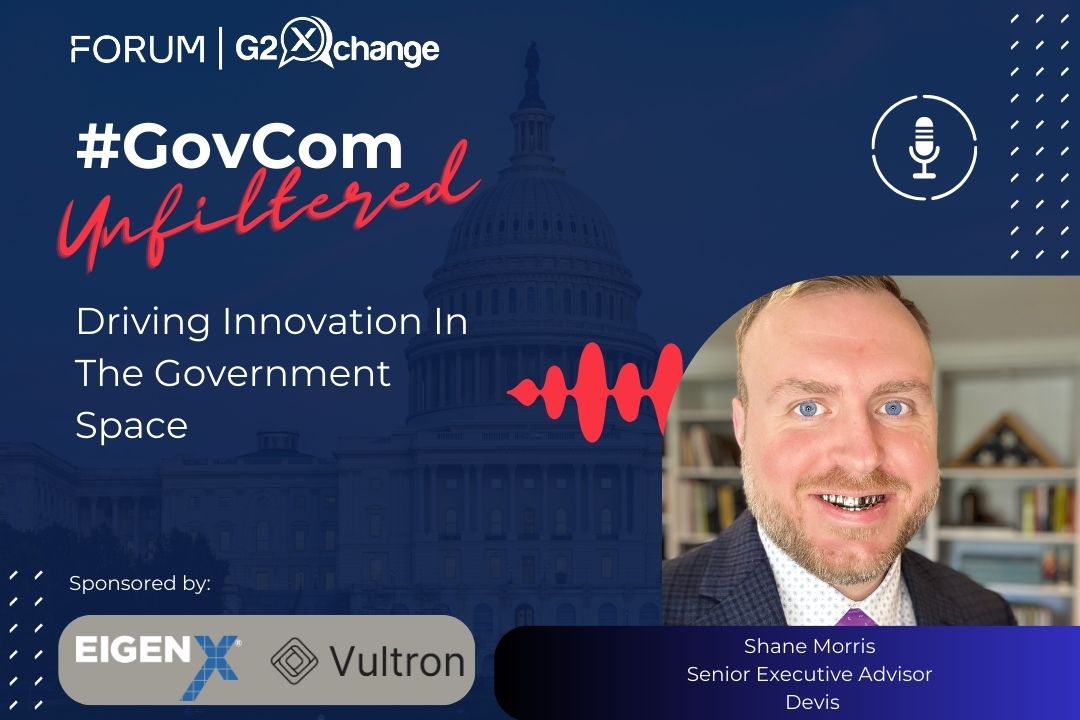By Jeff Shen & Eric Spillman, Red Team Consulting, LLC
The Department of Veteran Affairs released its long awaited IDIQ contract this past Tuesday. Despite the initial delays and minor adjustments to the Service Groups, the Final RFP closely resembles the prior Draft and is consistent with what the VA has been communicating the last few months. Companies will need to make decisions quickly to finalize their Service Group selections and teaming arrangements since the clock is ticking for the March 14th response date.
The Department of Veteran Affairs released the Veteran Enterprise Contracting for Transformation and Operational Readiness (VECTOR) Request for Proposal on February 14th 2017. Questions are due by 10am February 22nd and proposals are due at 10am on March 14th.
CONTRACT OVERVIEW
Basic Information
| RFQ Title | VETERAN ENTERPRISE CONTRACTING FOR TRANSFORMATION AND OPERATIONAL READINESS (VECTOR) |
| RFQ Number | VA119A-16-R-0349 |
| Contract Type | IDIQ – Multiple Awards |
| Client | Department of Veteran Affairs |
| Address | Strategic Acquisition Center – Frederick;
Department of Veterans Affairs 321 Ballenger Center Drive, Suite 125; Frederick MD 21703 |
| Contact Information | Terrie Bloom, Terrie.Bloom@va.gov and Joshua Dean joshua.dean@va.gov |
| Competition Type | Set-aside for VA Verified SDVOSB Prime Contractors. |
| Place of Performance | Continental United States (CONUS), both on contractor site and government site |
| Minimum Guarantee and Max Value | The minimum guaranteed amount for this contract is $2,500.00, which will be obligated at the time of IDIQ award to each awardee. Aggregate value of all TOs is $25B |
| Travel | As specified in each TO |
| Instructions | VA provided a Proposal Booklet (Attachment F) that must be used without deviation – technical response to questions in each of the six service areas plus an overall IDIQ management approach. |
| Price | · Separate Excel Spreadsheet with specific labor categories for each service group.
· VA included estimated hours for each labor category. · Spreadsheet requires providing direct labor rate and fully loaded labor rate for each category. |
| Evaluation Factors | · Best value basis using a trade-off approach
· Technical more important than price |
| Evaluating SDVOSB Certification | · Teams (Prime and team subcontractors) will be evaluated in the following preferential order:
1. Tier 1: SDVOSB Prime, Joint Venture partners must all be SDVOSBs; team subcontractors are all SDVOSB or VOSB. 2. Tier 2: SDVOSB Prime, Joint Venture partners include SDVOSB and non-SDVOSB members; team subcontractors include non-SDVOSB/VOSB small businesses (e.g., WOSB, HUBZone, 8(a), etc.); 3. Tier 3: SDVOSB Prime, Joint Venture partners include SDVOSB and large business(es), team subcontractors include large business(es). · All SDVOSBs and VOSBs must be VetBiz Verified and certified in SAM · Cannot be both prime and sub in the same service group (e.g., if priming in Service 3, you cannot also subcontract in Service Group 3 on another team) · Cannot sub to two primes in the same service group (i.e., must be exclusive to one team in each service group) |
Overview of Changes between the Draft and Final RFP
Generally speaking, there were not many significant changes between the draft and final solicitation. If you have been working against the draft, you are in great shape! Take these next few weeks to refine your content and maximize your evaluation score. Despite the lack of significant changes, there are a few things worth noting:
1) Task Order Responses.
The draft RFP indicated that contractors were required to submit proposals in response to at least 50% of task orders. The final RFP has changed the language to indicate that contractors are “expected” to respond to all Task Orders where they are afforded the opportunity to do so. Bottom Line – Be prepared to respond to multiple Task Orders. Amongst your team, consider the strategy for Task Order response so that you are prepared after award.
[DRAFT]: “Contractors will be required to recertify annually from the effective date of contract award, its small business status. Additionally, contractors are required to submit proposals for at least 50% of TOPRs for which they are eligible.
[FINAL]: “Contractors are not required to respond to all TOPRs for which they are afforded the opportunity, however they are expected to do so. Contractors unable to perform the requirements as stated in a TOPR must submit a “no-bid” to the CO with a brief, yet specific, explanation. Repeated failure to provide a proposal or adequate rationale for failure to propose may result in off-ramping at no cost to the Government.”
2) Small Business Recertification.
Some good new here! You will not automatically be off-ramped if you exceed the size standard in the out years of this contract, though the Government may choose to remove those companies who exceed the NAICS 541611 size standard (currently $15M revenue averaged over the past 3 years) over the life of this contract.
[DRAFT] “Contractors not meeting these requirements may be “off-ramped” via termination for convenience.”
[FINAL] “Contractors will be required to recertify small business status annually from the effective date of contract award. This will not automatically result in the off-ramping of a contractor that exceeds the size standard at that time; however, the Government reserves the right to do so.”
3) Education and Experience.
If you were concerned about meeting the requirements for labor category education and experience requirements, the government has provided some alleviation. First, education and experience will be evaluated at the Task Order level – there are no key personnel requirements to be addressed in the proposal booklet for the IDIQ contract. Second, they have offered experience trade-offs and substitutions for education requirements within some labor categories as shown in the excerpt below from Attachment A.
| Experience Substitutions: | ||
| HS Diploma + 5 years additional experience | Equals | Bachelor’s Degree |
| Associate Degree + 2 years additional experience | Equals | Bachelor’s Degree |
| Bachelor’s Degree + 2 years additional experience | Equals | Master’s Degree |
| Master’s Degree + 4 years additional experience | Equals | Ph.D. |
| Education Substitutions: | ||
| A Ph.D. may be substituted for 5 years of experience with a Master’s Degree | ||
| A Master’s Degree may be substituted for 3 years with a Bachelor’s Degree | ||
| A Bachelor’s Degree may be substituted for 5 years of experience with a High School Diploma | ||
| An Associate’s Degree may be substituted for 3 years of experience with a High School Diploma | ||
4) Subcontracting.
The government has added a critical language that will allow you to strategically build your team to ensure success on the contract. Your use of teaming partners in multiple classifications (SDVOSB, VOSB, WOSB) may increase the number of qualifying Task Order that you can pursue. The following language was added to the RFP:
[FINAL] “1. Subcontracting – Prime contractors may propose different subcontractors at the TO level than initially proposed at the IDIQ level. Contractors in Tier 1 for the base award, will not automatically fall into Tier 1 for subsequent Task Orders. For each TO proposal, the size standards of the proposed team will determine what tier the contractor will be evaluated in for that TO. (For example, prime contractors may be in Tier 1 for the base award, and Tier 2 or 3 for a specific task order proposal.) This provides the flexibility for the prime contractor to build its team to best meet each requirement.“
5) Instructions to Offerors.
A few changes appear in the instructions that should provide flexibility in developing your proposal response. Keep in mind that while the Final RFP does allow for tables, graphics, and illustrations, it does not mean you should rely heavily on these visuals. They should be used to ensure the clarity of your response. – new/modified language as follows:
“All files will be submitted as either a Microsoft Excel (.xls/.xlsx) or Word (.doc/.docx) file or an Acrobat (.pdf) file or compatible as indicated in the instructions on each template. Page size shall be no greater than 8 1/2″ x 11″. The top, bottom, left and right margins shall be a minimum of one inch (1”) each. Do not change the margins or formatting in the Templates provided. Text or “callout” boxes are not permitted. Font size shall be no smaller than 11-point. Characters shall be set at no less than normal spacing and 100% scale. Tables, graphs, and illustrations are permitted, however should be used for demonstrative purposes only and not for the purpose of using a smaller font throughout the proposal.”
6) Evaluating Size Standards.
It is important to note that the Contracting Officer will be making the determination of size standards across all offerors and teaming partners by verifying information in VetBiz and SAM.gov. The CO will use this information to determine under which Tier you are eligible for award. Be sure that information is update to date for you and your entire team!
– “The CO will make this determination based on the information provided and confirmation of the size status of all parties. Offerors shall not make a self-assessment of applicable tier. A self-assessment of applicable tier is not binding and may not apply.” – CO will determine which tier they fall in.
– “Verification in VetBiz alone does not meet the requirements for size standard authentication. Offerors and subcontractors must also be certified in SAM.gov following SBA guidelines for certification as a small business.”
7) Pricing.
The government provided a clarification to define the different between hourly rates and full burdened rates.
– “The hourly rate is the rate that the personnel will be paid directly by the contractor. The fully burdened rate is the rate that the Government will be billed for each hour and includes the hourly rate plus any applicable indirect rates and profit. An offeror’s proposed Fully Burdened Rates shall become the ceiling rates in any subsequent contract award to that offeror. Offerors shall utilize the Washington D.C. area for the Government facility rate.”
8) Changes to Service Groups.
The Service Groups remain largely the same with the exception of Service Group Four (4) which does have some new requirements that should be considered. These new requirements require you to provide further detail and examples to demonstrate your capability in provide this service.
“5. Demonstrate experience and capability in developing commercial-grade/national-stage, high-production value, professional video for education and outreach, for commercial purposes, for testimonial/interview segments, and/or for Public Service Announcements (PSA).”
and
“6. Submit up to 10 active web URLs that demonstrate sample products to include print products; web outreach/marketing services; video production; and communication strategies, including associated metrics to measure success. The Government will only review the webpage the URL links directly. The Government will not review additional links within the URL provided.”
9) Other Changes to Review.
Pay attention to the labor category matrix. In the final RFP, some positions have been revised to deleted. Additionally, there are a number of changes to the required labor categories across each of the Service Groups. While this may seem like a hindrance, keep in mind that education and experience need only be proven at the task order level, and the Government has added trade-offs (see item 4). Finally, background investigation costs are no longer specifically called out with dollar values, the new language says: “The cost of the background investigations shall be in accordance with Office of Personnel Management (OPM) Federal Investigations Notice 16-06.”
In conclusion, it’s always nice to see a final RFP that is not too far removed from the Draft. If you have been working against the Draft RFP, you are in great shape. If not, there is still time to put together a winning proposal! Contact Jeff Shen jeff.shen@redteamconsulting.com at Red Team Consulting; we can help! Red Team Consulting is one of the premier providers of proposal development consulting, capture management, pricing strategy and training services in support of government contractors.












